One of the biggest challenges in deploying a multi-channel surround sound system like a home theater, or even a high-end two-channel stereo system is getting the bass response right. While midrange and treble frequencies are directional and relatively easy to control, low frequencies are omnidirectional. As these frequencies bounce around a room, they can wreak havoc on the overall bass reproduction.
Room modes or “standing waves” happen when bass frequencies bounce off a wall, floor or ceiling and interfere with each other. This interference can occur in different ways in different parts of the room. In one part of the room, a bass peak of a reflective wave may hit another peak, causing excessive bass boom in a particular frequency, while in another part of the room a trough or low point in the bass wave may cancel out a peak, causing a particular frequency to be lower than it should be or even entirely silent. While you may achieve an even and accurate bass response in the “sweet spot,” just by experimenting with subwoofer placement, you may find moving your listening position just slightly to the left or right can cause the bass reponse to sound uneven.

Custom installers and DIY audio hobbyists deal with this in different ways. Using multiple subwoofers can lead to a more even bass reponse in different parts of the room if you’re very careful with placement. Room treatments or “bass traps” can help to absorb some of these bass reflections before they cause problems. Room correction and calibration software can compensate for standing waves electronically by adjusting time delay, phase and level of the audio signal. Each of these methods can help tame standing waves, and all three approaches can be combined, but none offers a “silver bullet” in all rooms and with all speaker layouts.
Trinnov, maker of high-end preamp/processors and amplifiers, developed a solution to this problem which they call “WaveForming.” In a WaveForming system, the “multiple subwoofer” and “room correction software” approaches to bass optimization are combined. With WaveForming, an array of subwoofers is placed along the front wall and a complementary array of subwoofers is placed along the rear wall. The front woofers are used to transmit the bass while the rear woofers are used to cancel out or “absorb” the bass.
The concept isn’t entirely new as DBAs (double bass arrays) have been deployed for years in an attempt to tame those errant low frequencies. But Trinnov’s WaveForming takes this concept to the next level via precise measurements and design and advanced proprietary software that drives the system. With a proper WaveForming deployment, listeners get to hear the original bass signal, without interference from standing waves.
According to Trinnov, the other major (and perhaps most important) benefit of WaveForming is the drastic reduction in low-frequency decay time. Since the bass is not allowed to bounce around in the room for 500ms or more, a great deal of bass detail and dynamic contrast is revealed that would otherwise be “lost in the mud” in the room.

Trinnov’s WaveForming software shapes the signal sent to each woofer in the system in order to create a uniform and accurate bass response throught the room. It effectively turns every seat into the “best seat in the house.”
I’ve heard WaveForming in action and have found it to offer incredibly even and accurate bass response. At a demo at CEDIA Expo in Denver in 2023, the company played a deep bass sweep from 20 to 100 Hz. Without WaveForming applied, the bass sweep varied and pulsated with some frequencies very loud while others were very soft. Engaging WaveForming for that same test produced a steady sweep that stayed consistent in level from beginning to end. I moved around the room, listening to that sweep from multiple locations in the first to the third row of seating and heard similar results in each location.
The company moved on to actual movie demos on cuts like the column-punching scene in “John Wick, Chapter 4.” With each whack on the column, deep, punchy bass reverberated through the room. Bass was not just extended but taut and precise as well. Additional demo clips reinforced my initial impressions. This system was great at bass, and with that great bass came enhanced clarity and dimensionality for all frequencies.
The catch? The cost. The demo system at CEDIA comprised 43 speakers including 24 separate subwoofers (12 in the front, 12 in the rear) as well as the processor and amplifiers to power these. Total cost of this 13.24.6-channel system was well over a million dollars, not including installation. The company did demonstrate clips using just 5 subwoofers active (3 front, 2 rear) and 14 subwoofers active (12 front, 2 rear), maintaining similar sonic performance, but this was all in a custom-built room which had been painstakingly built, calibrated and optimized in Italy before being transported and reassembled in Denver.
When I asked a Trinnov rep about this over-the-top CEDIA demo, he shared, “Our speaker partner Ascendo chose the 24 subs in that display. It was quite a bit more than the room required, but they also wanted to show off the impact of infrasonic bass. While those subs were not specifically designed as infrasonic ones, you can do pretty much whatever you need to when you have that many.”
Trinnov says that the price of admission will come down over time as the system is refined and more installers have come up to speed on how to deploy it. At the High-End Munich show this week, the company will partner with speaker maker Pearlisten to show off a new version of WaveForming called “cylindrical WaveForming” which may simplify WaveForming installations as well as lower their cost in specific rooms.

With the original “planar WaveForming,” subwoofers need to be mounted above the floor in order to work on both vertical (floor to ceiling) and horizontal (wall to wall) wave reflections. This can make installation more complex as it requires that custom walls or shelves be built around the optimized subwoofer locations. With cylindrical WaveForming, fewer subwoofers are needed and subwoofers can be placed on the floor in the front and rear of the room.The ideal room for cylindrical WaveForming either features a highly absorbent low-frequency ceiling, or an open ceiling so reflective bass waves from above will not interfere with the main bass signals.
Trinnov says that planar WaveForming is best in most rooms, but cylindrical WaveForming maintains the same benefits for less overall expense and effort as long as the ceiling recommendations are met. Also, cylindrical WaveForming offers a better solution for home theaters that use a large OLED or MicroLED screen instead of a projector. Projection screens can be designed to be acoustically transparent, allowing sound from the subwoofers and in-wall speakers to pass through to the listener. Flat panel OLED and Micro LED screens cannot.

The Perlisten/Trinnov demo at High-End Munich will use cylindrical WaveForming with Perlisten’s THX Certified Dominus surround speakers as well as eight of the company’s D15S 15-inch active subwoofers. Trinnov’s Altitude32 pre/pro with WaveForming technology will provide the source switching and processing while Trinnov Amplitude16 and Amplitude8 amplifiers will be used to drive the speakers. While this is still far from a “budget” home theater, the 11.8.6-channel demo system uses just over half as many speakers as the 13.24.6-channel CEDIA Expo demo, with 1/3 as many subwoofers. This and the simplified floor placement of subwoofers should bring the system cost down considerably.
WaveForming technology is proprietary to Trinnov and is currently only available in Trinnov’s high-end preamp/processors including the Altitude16 and Altitude32. WaveForming technology can be used with many different speaker and subwoofer brands, as determined by certified Trinnov dealers and custom installers.
Pros of WaveForming:
- Extended, even bass reponse virtually anywhere in the room
- Bass extension and precision are preserved — the bass is both deeper and more detailed
- Without boom and excessive bass, details in midrange and treble frequencies are more articulate and easier to hear
Cons of WaveForming
- Expensive – WaveForming processors aren’t cheap, nor are their set-up and installation
- Requires multiple subwoofers and very specific placement for best effect
- In some room layouts, subwoofers must be mounted high on the front and rear walls in order to compensate for both horizontal and vertical standing waves
How to get WaveForming in Your Home Theater
Although Trinnov did recently release a Web-based WaveForming design tool for DIY audiophiles and custom installers to explore various room and speaker layouts, building a WaveForming system currently requires hiring a custom installer certified for Trinnov WaveForming systems.
Related Reading:
CEDIA Expo 2023’s Sickest Demo Had 43 speakers and 125,000 Watts of Power
Trinnov Offers Free Web-Based WaveForming Design Tool to Installers and Home Theater Hobbyists
Trinnov and Perlisten Team Up to Showcase New Cylindrical WaveForming System at High-End Munich 2024


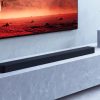

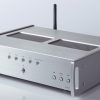
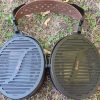
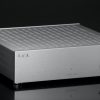

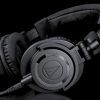

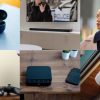

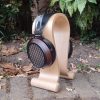
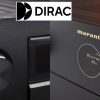

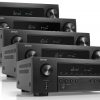






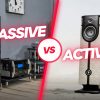





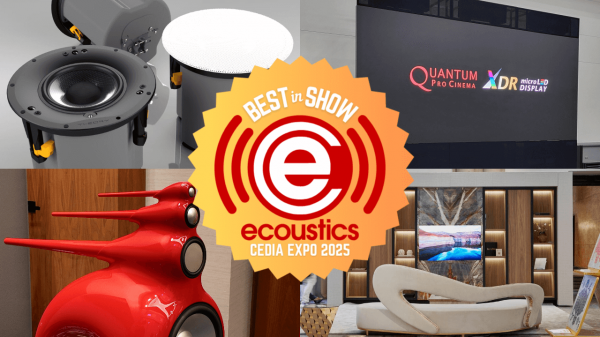
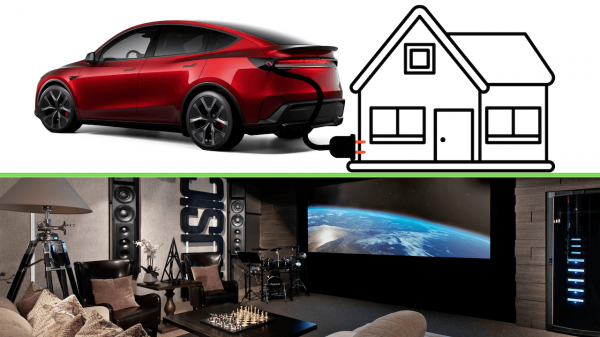
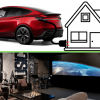

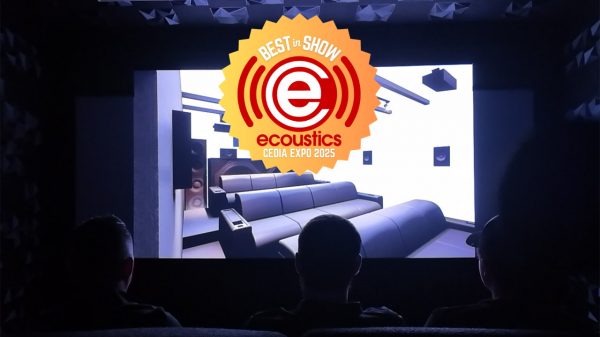



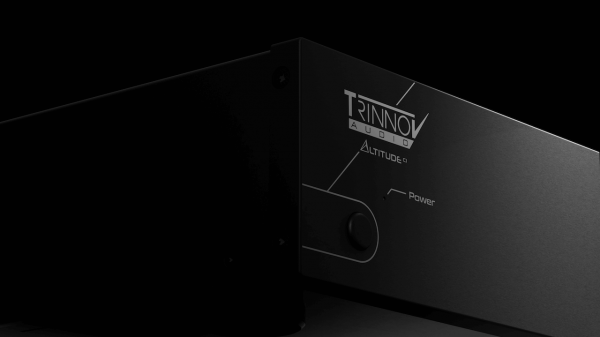














Howard Skillington
May 12, 2024 at 11:39 am
One of your illustrations shows a phalanx of a dozen subs on both the front and back walls.
I’m sorry, but it seems that all good tech developments eventually get pushed to the point of absurdity – and beyond.
Ian White
May 12, 2024 at 2:49 pm
Howard,
It is only “absurd” if it doesn’t work. In this particular case, it works exceptionally well and a number of our team have tried it and were very impressed.
Best,
Ian White
Chris Boylan
May 13, 2024 at 1:40 am
Yeah, even Trinnov said that they didn’t need 24 subwoofers in order to make the bass work in this specific room, but Ascendo (the speaker maker) wanted to show off infrasonic bass in the demo (bass below 20 Hz) and for that they needed a whole lot of woof.
I haven’t gotten any feedback yet from the High End Munich WaveForming demo. That one was also super high-end, but “only” needed 8 subwoofers (four front, four rear). It will be interesting to see if people were as impressed with this demo as with the 24-subwoofer one.
Steff
May 14, 2024 at 4:45 pm
It was to show how absurd it can be.. they also used 3 subs in front and two in the back. With the same effect